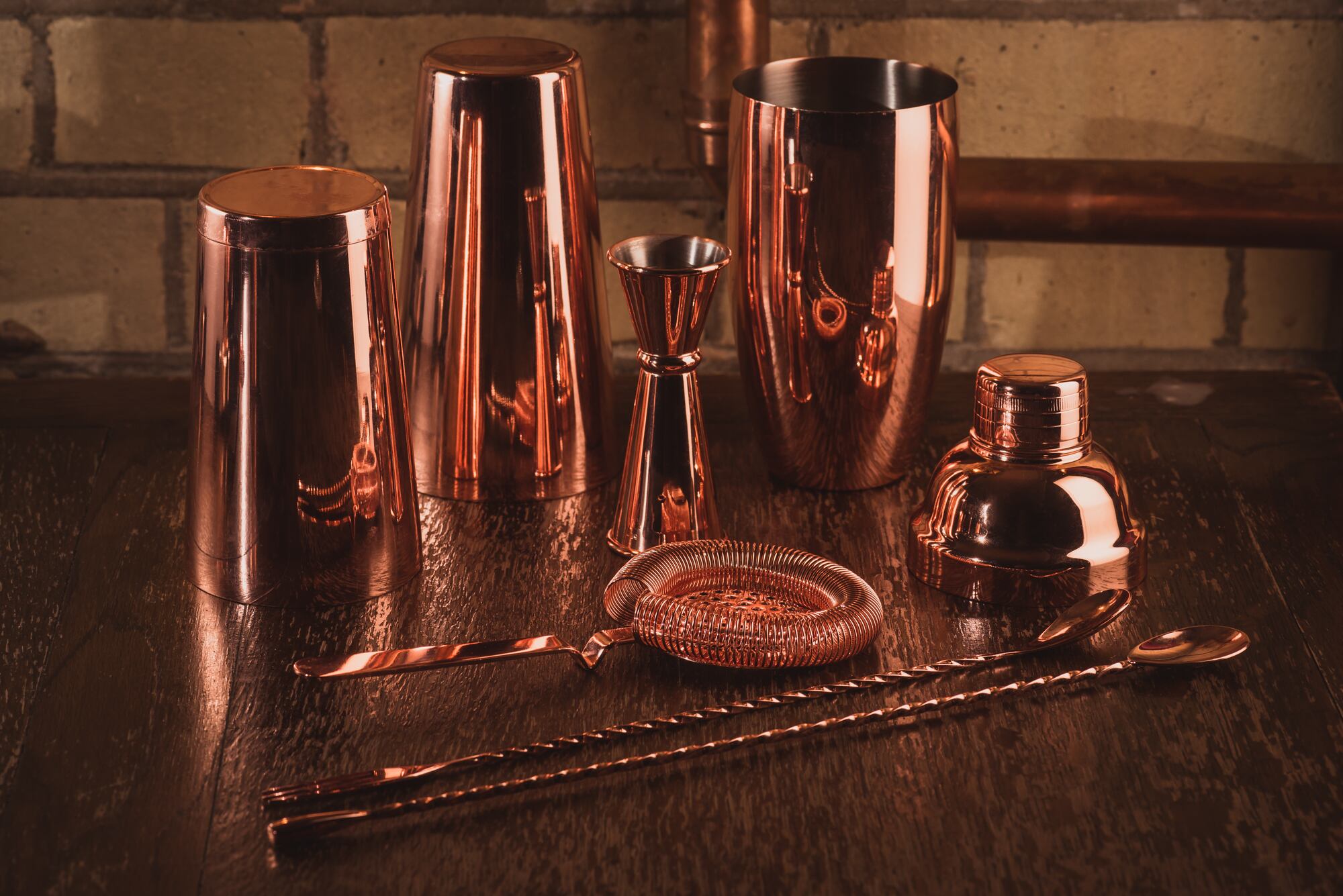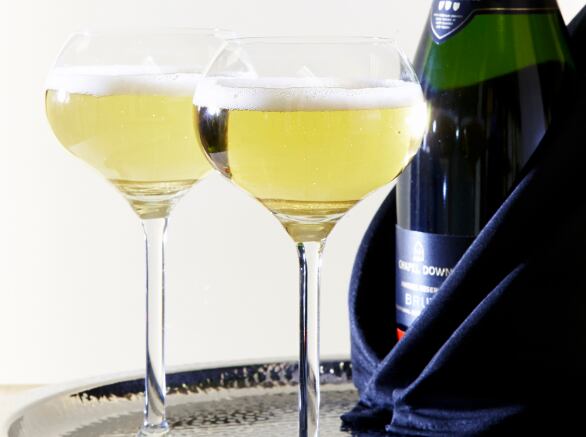Pub-goers are no mugs when it comes to appreciating a good drink. Your choice of glassware, how you look after it, and the way your drinks are served in it, all have an impact on whether they buy one or more drinks – or even if they’ll come back.
“Customer perception of an establishment and its drinks can be changed by its glassware alone,” says Henry Stephenson, managing director of catering equipment supplier Stephensons. “Good glassware demonstrates dedication to delivering the best experience, and achieving the perfect serve.”
The Dos and don’ts:
Henry Stephenson, Stephensons:
DO: Use balloon-style glassware, as it can truly impact upon the appearance, flavour and, therefore, sales of a pub’s gin offering.
DON’T: Use small ice cubes when serving gin, as they melt quickly and dilute the drink; use good quantity large ice cubes instead.
The pulling power of a pub’s glassware and quality of serve has led to demand for more adventurous choices of glassware, which manufacturers and suppliers have been happy to respond to.
“What you serve your drinks in has become as important as the drinks themselves,” says Heather Beattie, Olympia brand manager at Nisbets. “Glassware development is allowing publicans to add value and stand out from the competition.”
Playing such a huge part in maintaining a drink’s reputation and encouraging repeat custom, bar staff training is essential, says Heineken on-trade category and trade marketing director Andrew Turner.
“Bar staff should know not only how to serve a top quality beer, but how to talk about the subject with confidence and specialist knowledge,” he says.
It’s a message that seems to be getting through – over 16,000 on-trade employees took part in Heineken’s Pint Perfection training scheme last year.
‘Grow customers’
“We want to help our customers grow, by encouraging more people into the on-trade, more often; and by getting them to spend more when they’re there,” says Turner. “Consistently impressing them with quality pints is key to that.”
The Dos and don’ts
Gill Head, Artis:
DO: Make sure your glasswasher is working properly, and that you follow the manufacturer’s detergent recommendation. A sparkling glass is a key part of the perfect serve.
DON’T: Serve a drink in a chipped or dirty glass!
Star Pubs & Bars encourages licensees and staff across its 1,050 venues to complete the Heineken training course, in the quest to serve perfect pints of cider and lager.
“People judge a pub by its beer and cider,” says managing director Lawson Mountstevens. “The quality of draught beer and cider is one of a pub’s points of difference and a reason why the pub can command the prices it charges.”
The twice-yearly audits of the group’s outlets show that when the quality of serve is right, a pub will sell more. He explains: “Our retail audits show that pubs rated good or shown to have improving standards – of which beer is an important part – are achieving 7% more sales than the rest.”

The pub group also put its 80 mystery shoppers through Heineken’s Pint Perfection training in 2014, to ensure it has the “most thorough pint quality assessment in the industry”.
Achieving the perfect serve is just as important for soft drinks, says Coca-Cola Enterprises (CCE) trade communications manager Donna Pisani. To help pubs with this, CCE is now offering a soft-drinks training course.
“Soft drinks play an increasingly important role for licensees,” she says. “So CCE has launched a free online training programme for bar staff, demonstrating how pubs can increase their sales by getting the serve right”.
The first module of the course looks at how staff can improve presentation and meet demand for a premium quality drink. The second underlines the importance of the ‘second serve’. It gives instruction on the best times to suggest another drink, and how to incentivise staff to reach their sales targets.
Glassware helps publicans meet consumers’ increasing demand for innovation, quality and value for money, according to Sophie Davies, creative manager for hospitality, at Churchill China UK. She explains: “Serving drinks in added-value shapes and quality glassware helps instantly create the impression that customers are getting something special.”
Glassware can also differentiate an establishment from its competitors, says Henry Stephenson. And he adds: “The right glassware can encourage customers to pay a premium for drinks, and it allows an establishment to really develop its own style.”
So, with this in mind, we asked our suppliers to give us the lowdown on some of the latest glassware trends.
Craft beer tasters
The Dos and don’ts:
Heather Beattie, Nisbets:
DO: Take steps to avoid etching (the cloudy texture that can develop with regular cleaning in the dishwasher): clean glassware immediately after use, use a specially formulated detergent, and use a glasswasher rather than a dishwasher.
DON’T: Serve drinks in a warm glass. There’s nothing worse to drink from, and it’s bad for the glass. Adding ice to a hot glass causes thermal shock, which can lead to cracks and breakage.
Churchill says that craft beer tasters served on wooden boards are rising in popularity, as are wine and cocktail tasting boards. These drinks are not just being served in glassware, but in Churchill’s teapots and teacups too.
“Wine is a classic example of where the correct glass really makes a difference – not only visually, but on the actual taste of the wine,” says Artis marketing manager Gill Head. She recommends Italian manufacturer Luigi Bormioli’s 15-strong Vinoteque range of wine glasses. Each glass is scientifically designed to maximise the olfactory (scent) and tasting pleasure of individual wine varieties.
With Prosecco enjoying a popularity boom, Stephensons’ Henry Stephenson suggests pubs use etched champagne flutes, as they help keep in the fizz. He adds: “Some wine experts now prefer a wider-based champagne flute, which allows the wine to nose better. Artis and Riedel have launched glassware in this more contemporary style.”

Nisbets’ Olympia crystal glassware is going from strength-to-strength given the trend for cut glass. “Combining clarity and strength, the range is functional and elegant,” says Nisbets’ Beattie. “That means operators can offer customers quality crystal glassware without the high price tag.” The range starts with the classic, entry-level ‘Modale’ stemware, moving up to the high-end ‘Poise’ collection.
“Attitudes to the once humble G&T have changed markedly over the past year or two, and that’s helping to grow the market,” says Gill Head at Artis. “We’ve seen the growth of artisan gin distilleries, speciality tonic waters, new types of garnish – and a new style of glass to serve it in.” The copa de balon glass is now “all the rage”, she explains, replacing the Paris goblet as drinkers’ glassware of choice. The new 2016 catalogue from Artis has three different styles of G&T glassware.
Churchill recommends a stylish stemmed glass for craft beer, such as its Dunkel glass. As well as being tempered for added durability, the elegant design helps maximise craft beer’s potential to attract female drinkers. New to this year’s Artis catalogue is the Birratque crystal craft beer collection, which matches the organoleptic characteristics (those that you would experience with your senses) of six specific beer types to the correct shape, style and quality of glass.
“Cocktails remain a major trend, and customers expect them served oozing with visual appeal,” says Stephensons’ Henry Stephenson, whose company has introduced “novel and sophisticated” copper barware to its range. Nisbets’ Olympia jar-style cocktail jugs are designed to give cocktails and soft drinks extra flair. They can also keep the bugs out in the summer, as they can be paired with screw-on lids.
